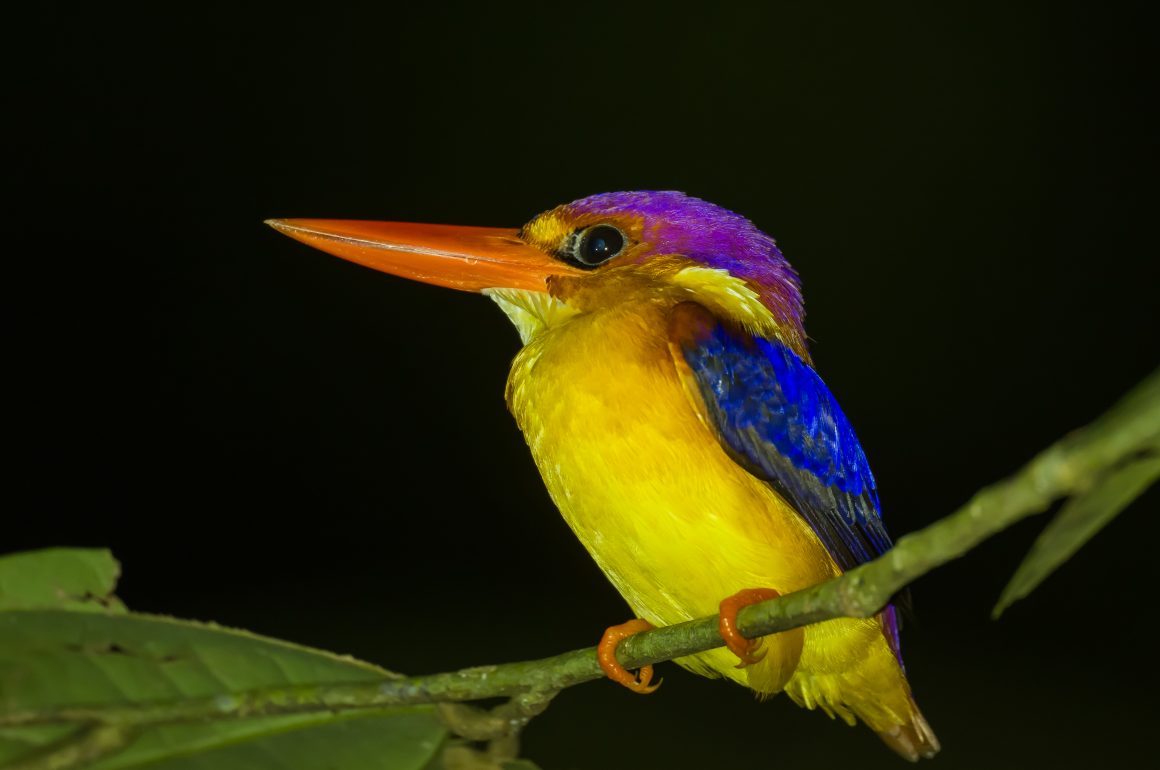
Sometimes I just want to hug eBird, or more specifically, whoever writes the short species descriptions (even though I am not the typical hugging kind of person, trust me on this). Such as in the case of the Rufous-backed Dwarf-Kingfisher, which eBird describes as a “tiny, unbelievably cute kingfisher: a luminous ball of pink, orange, yellow, and varying amounts of blue and purple”.
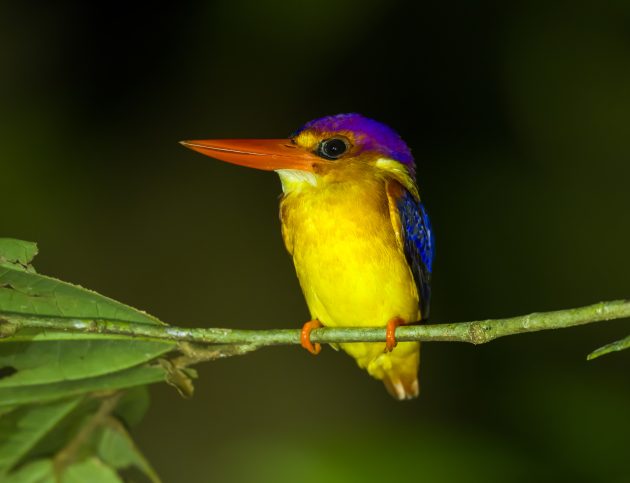
Admittedly, when thinking of hugging this person, I hope it is a cute young female student rather than an old beer-bellied male ornithologist …
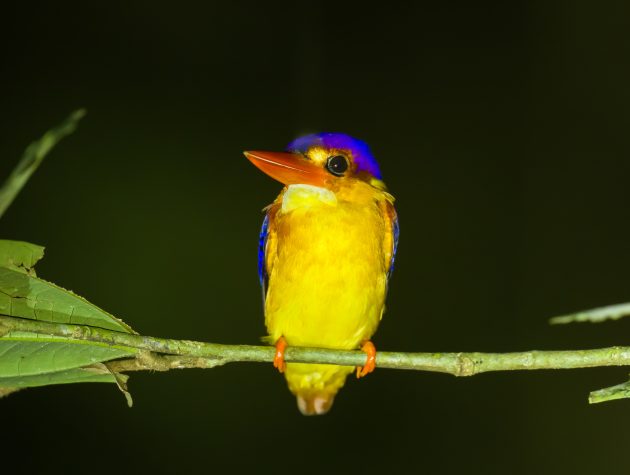
Collared Kingfishers apparently do fairly well in palm oil plantations – no wonder as they obviously do not mind pretty weird-looking things.
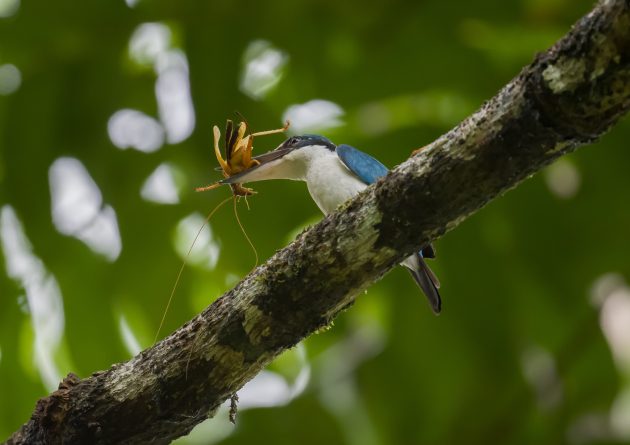
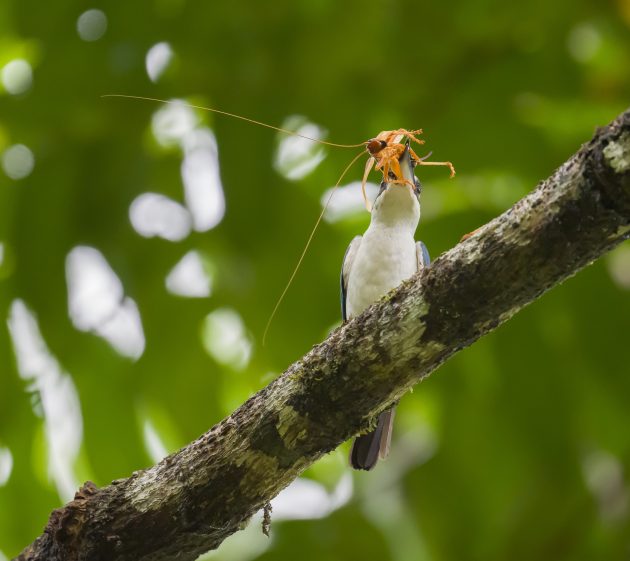
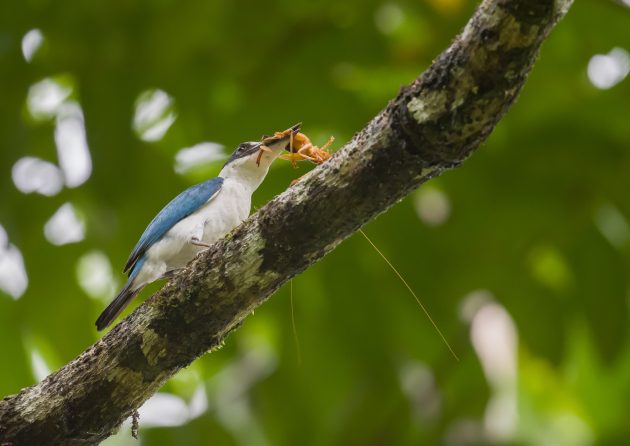
If you ever get invited to lunch by Collared Kingfishers, you may therefore want to carefully consider whether to accept. The same applies when being invited by some Cantonese people.
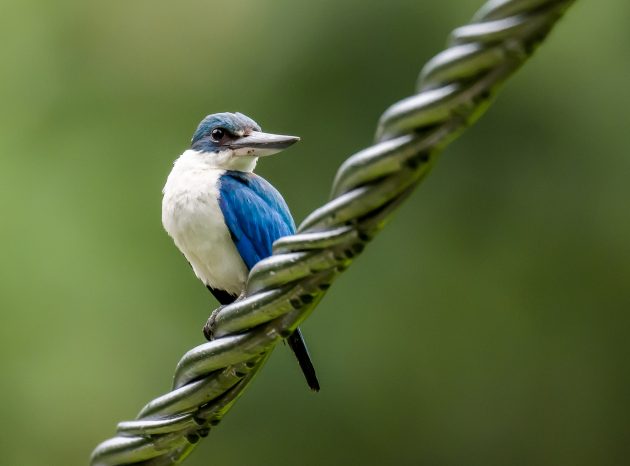
The Plain Sunbird is the plain vanilla version of the otherwise often very colorful family (ok, a very low-budget sort of joke).
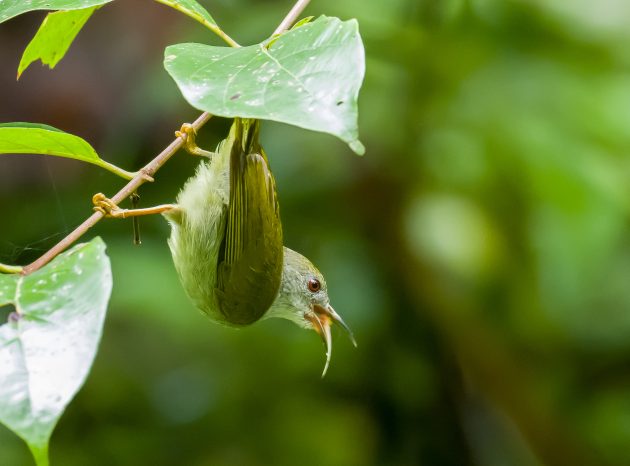
Adding insult to injury, eBird disparagingly characterizes it as “extremely plain”.
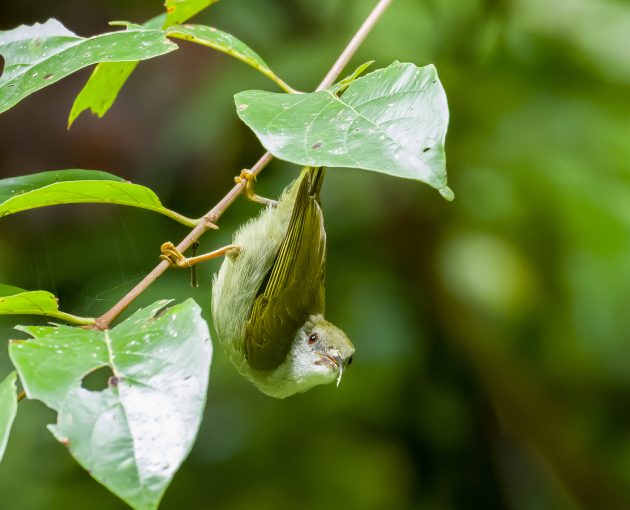
But it is true – the species has to face the reality that it is much, much plainer than some other family members such as the Ruby-cheeked Sunbird.
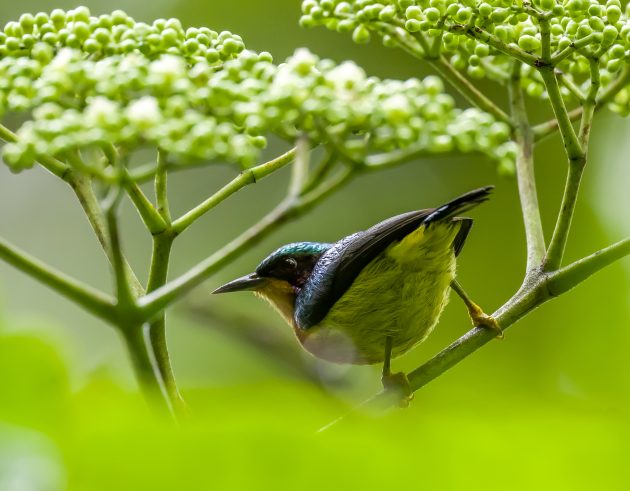
One paper suggests that the Ruby-cheeked Sunbird primarily feeds on insects rather than on nectar, the more common food of sunbirds. However, the HBW lists nectar among its food.
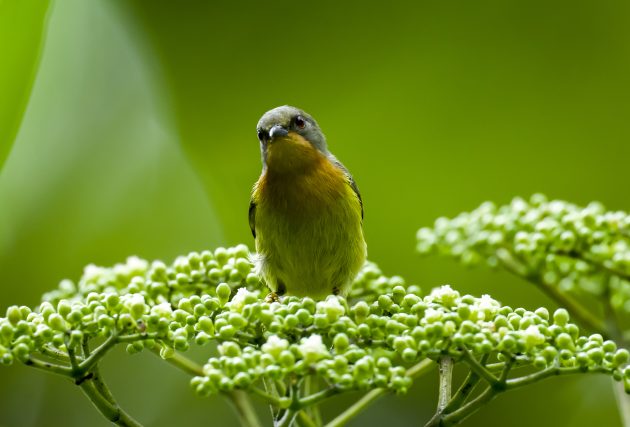
The weight indicated for both sexes in the HBW (“male 8·2–9·1 g, female 8·6 g”) suggests that the female birds control their weight much more strictly, while the males occasionally – maybe after watching a soccer match while drinking beer and eating fatty things – gain weight which they lose again whenever the lack of clean kitchen equipment keeps them from preparing meals.
There are about 50 different species of flowerpeckers globally. Somewhat puzzlingly, Wikipedia states that they are often dull in color, though the site then admits that in several species the males have brightly patterned plumage. That characterization works fairly well for the Yellow-rumped Flowerpecker …
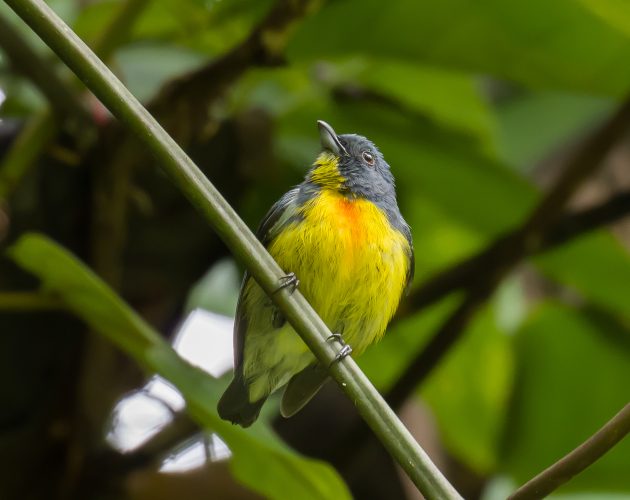
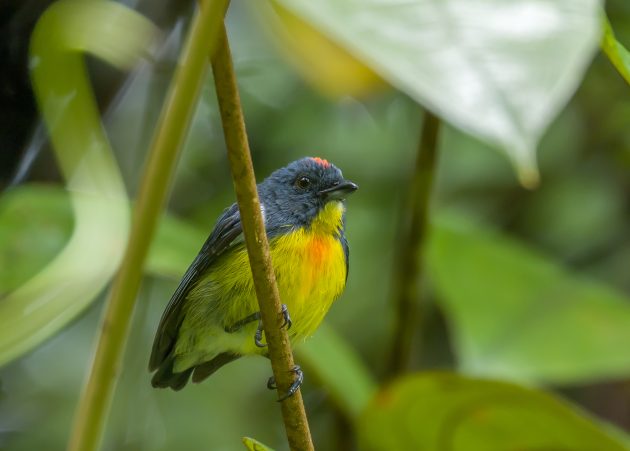
… for which the HBW indeed states that “female is duller than male” …
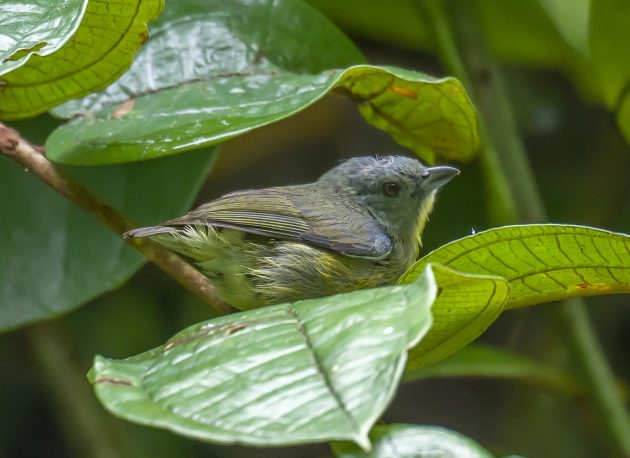
… but less so for the not-very-dull-in color Yellow-breasted Flowerpecker (for which both sexes look similar).
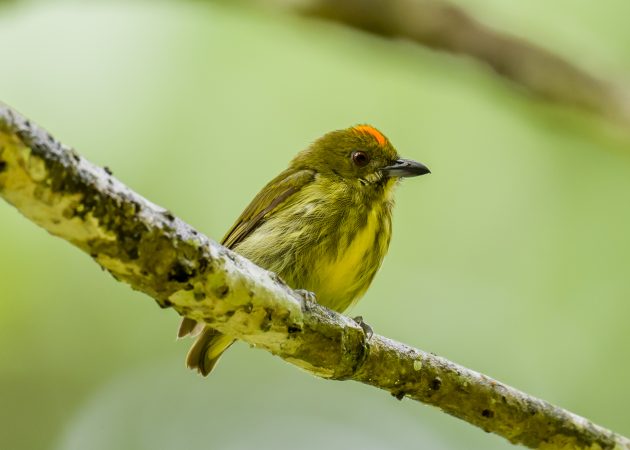
“Dull, me?”
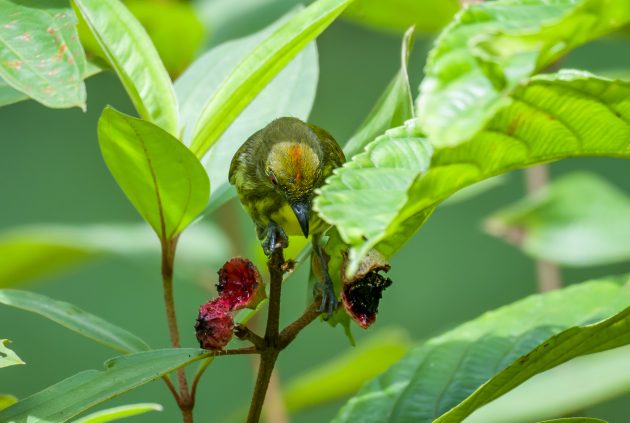
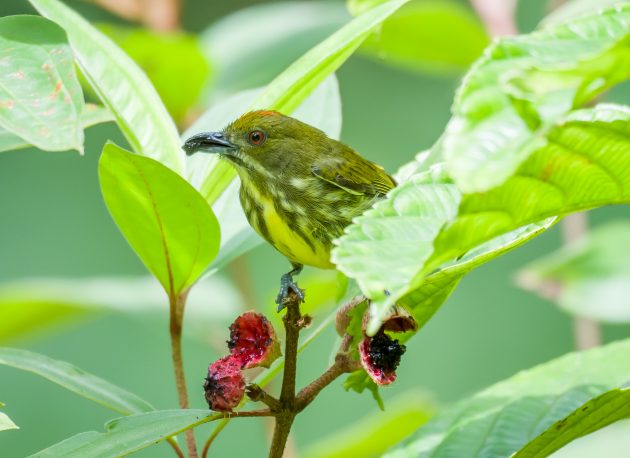
If you have ever been to Singapore, you will know that about half the places there are named after Sir Thomas Stamford Bingley Raffles (1781 – 1826). For good measure, some animals in the near vicinity were also named after him, such as Raffles’s Malkoha.
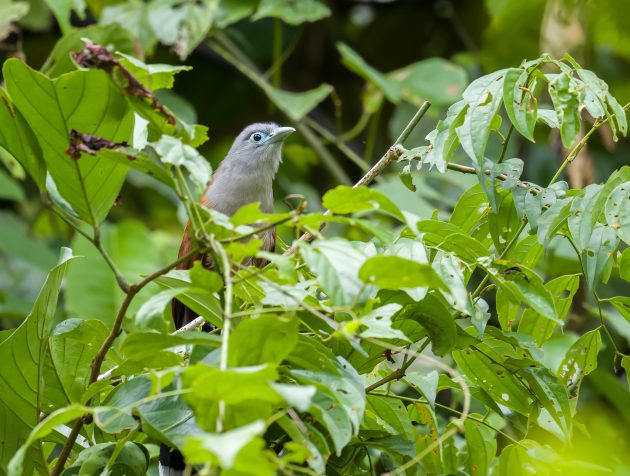
You know there is probably some evil backstory if Wikipedia talks of a “complex” legacy of Raffles – further detailing that “he was ultimately an imperialist benefiting at the expense of the indigenous peoples”. So, I guess this is another bird name that should be changed eventually.
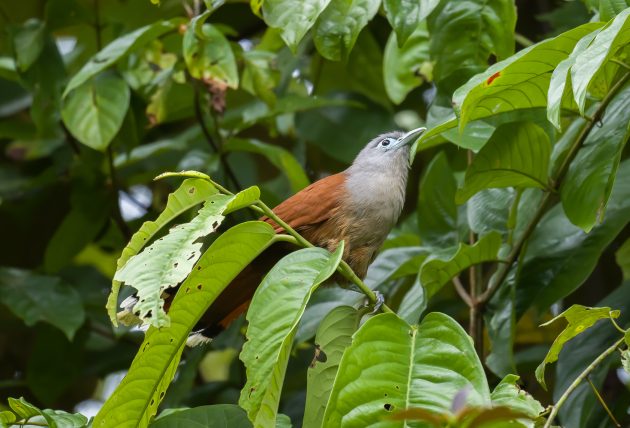
There is no British explorer named Sir John Spotted (1789 – 1856), so the name of the Spotted Fantail will likely remain unchanged.
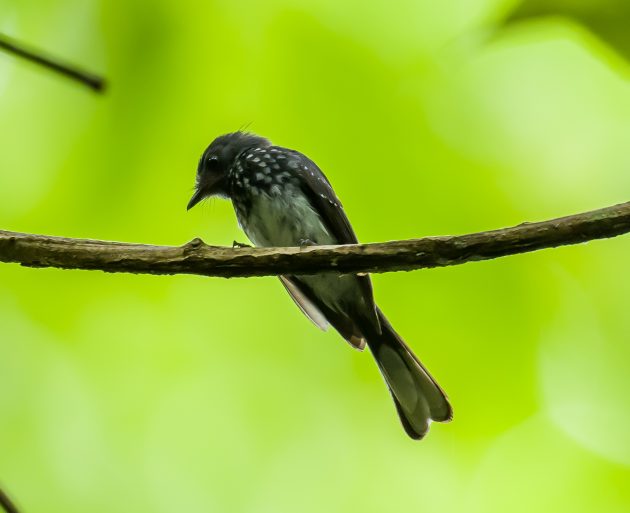
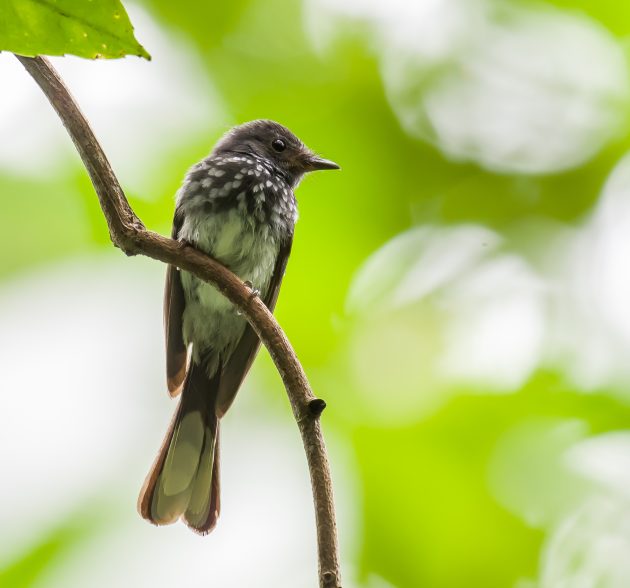
One of the scarier moments of the stay at Tabin was when two Asian Glossy Starlings tried to hypnotize me with their piercing red eyes. I escaped, barely.
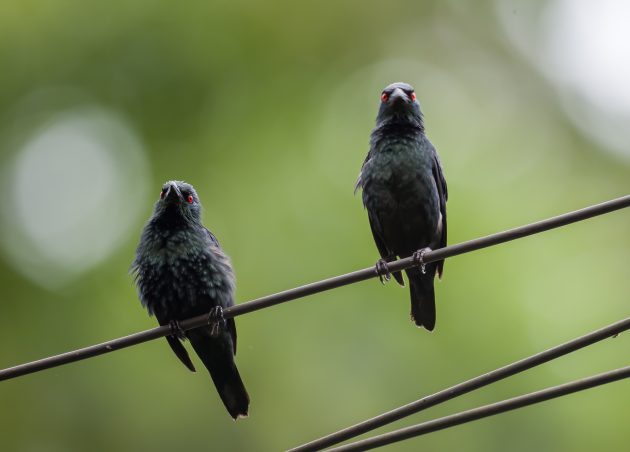
In contrast, the Little Spiderhunter is scary for spiders only, not for people.
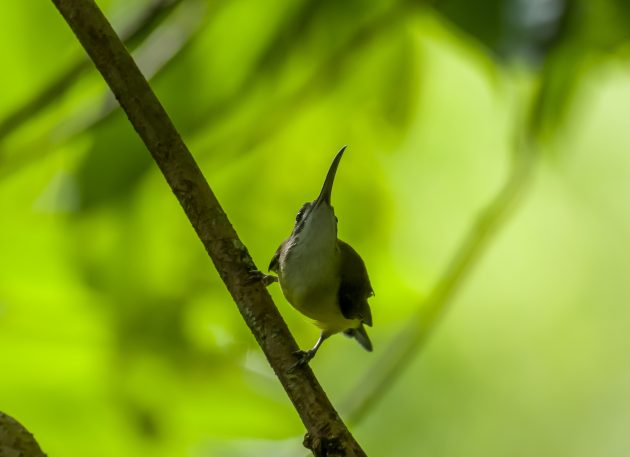
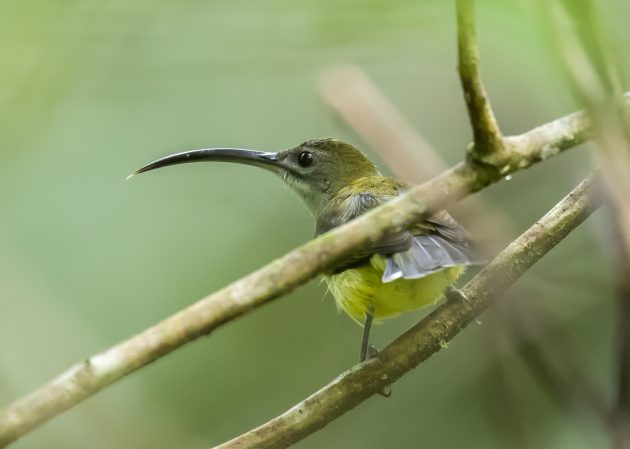
To me, the Whiskered Treeswift looks a bit like it is wearing some kind of generic superhero costume. I guess it is these facial stripes. If these are taken off, the species looks just like Clark Kent.
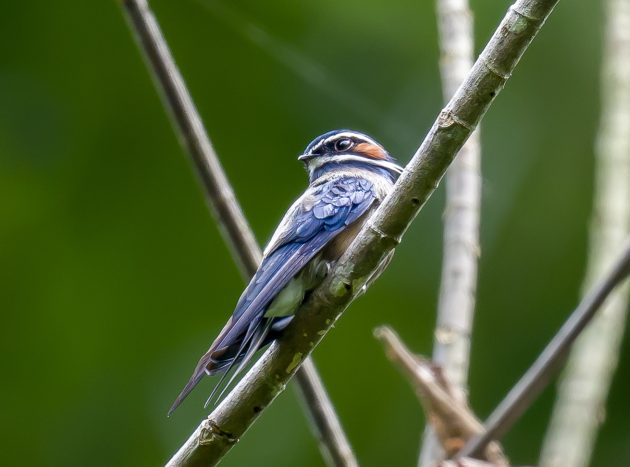
eBird characterizes it as “long-tailed and long-winged, like a cross between a swift and a swallow” – perhaps inspired by the Genus name Semiprocne (“half-swallow”).
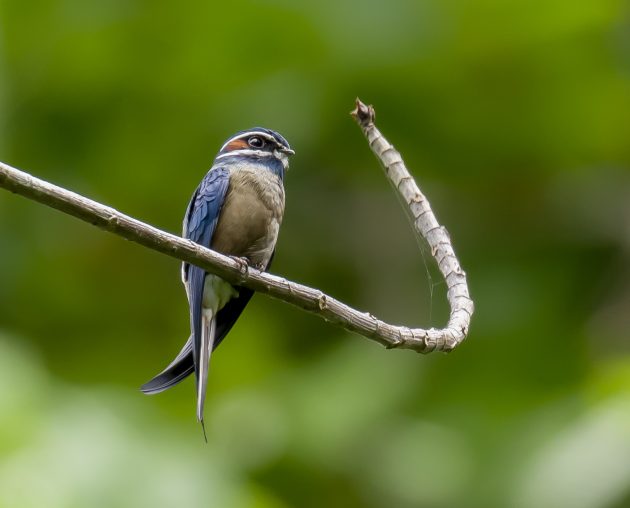
The Crested Serpent-eagle is not a vulture, but that does not keep me from mentioning a recent Economist article here, “The sudden demise of Indian vultures killed thousands of people”. And while this article is behind a paywall, the original research paper is not. It describes how, when a veterinary drug used in India killed the vast majority of Indian vultures, the human death rate in affected locations increased by about 4% as the vultures were no longer around to feed on animal carcasses and the sanitation thus worsened substantially.
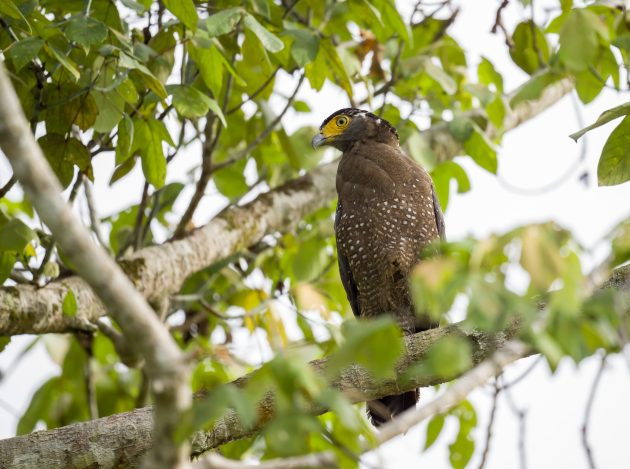
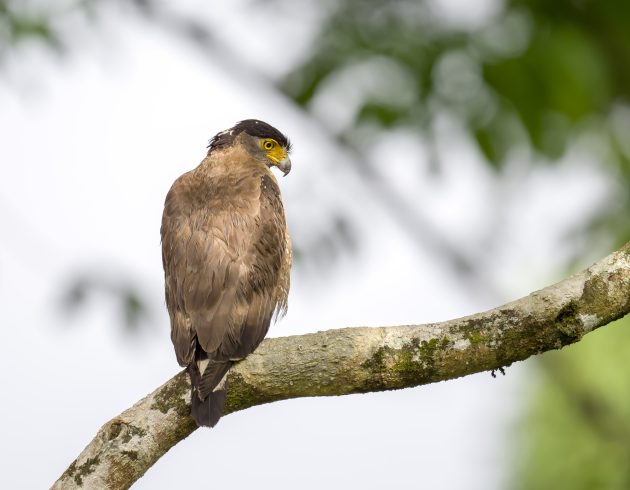
Of course, there should be a photo of a vulture here, not of a Crested Serpent-eagle.
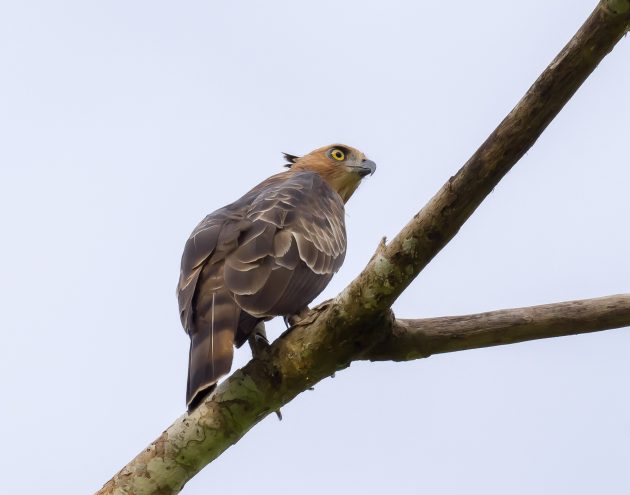
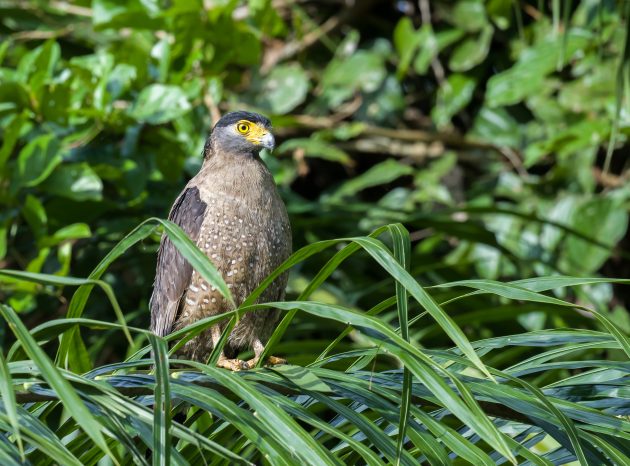
While this was a good topic to highlight in the Economist, a recent leader on nationalism in the same journal was less useful. In that leader, it is stated that “Nationalism can be positive or negative” – something I doubt very much. They quote Yascha Mounk: “At its best, it [nationalism] can inspire a white Christian living in rural Tennessee to feel special concern for a Hispanic atheist living in Los Angeles—and vice versa.” It is very hard for me to see how a rural Tennessean having a special concern for the Hispanic atheist living in Los Angeles but not for one living in Buenos Aires or Tokyo can be a force of good. Isn’t that what nationalism is all about? I care about you because you have the same passport? Us against them?
Ok, Kai, nobody is really very interested in your thoughts on political issues – could you get back to the topic of birds?
Well, yes. Woodpeckers are birds that are generally well-liked and considered fairly apolitical (with a few exceptions, such as the Pileated Woodpecker that took part in the storming of the capitol on Jan 06, 2021, though the bird involved claims this was a misunderstanding).
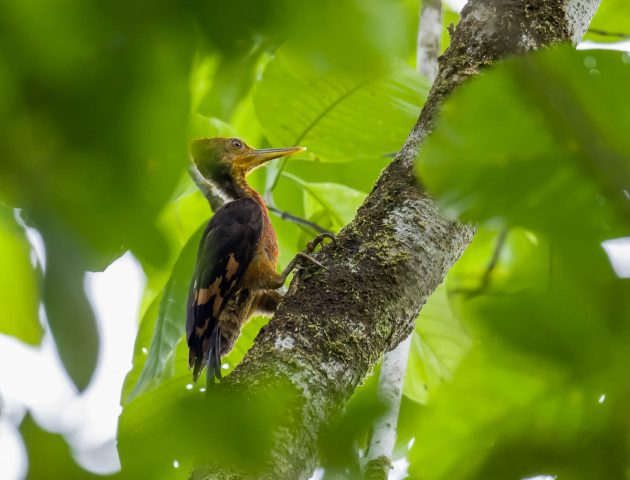
Apparently, somebody once made quite an effort to describe the different plumages of the Orange-backed Woodpecker: the natal down, the juvenile (first basic) plumage, the formative plumage, the second basic plumage, the third basic plumage, and the definitive basic plumage.
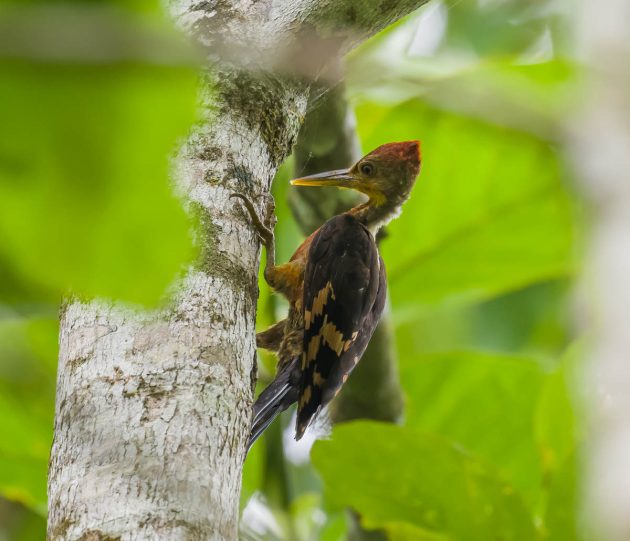
So, if you ever think of dressing up as an Orange-backed Woodpecker of different ages, remember: you will need to spend a lot of money on costumes.
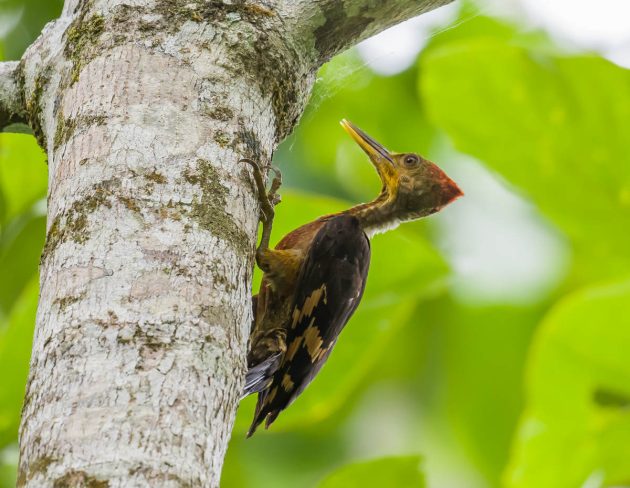
While the costume party an Orange-backed Woodpecker goes through when growing up sounds like fun, the Latin species name of the Buff-rumped Woodpecker (tristis, “sad, gloomy”) does not.
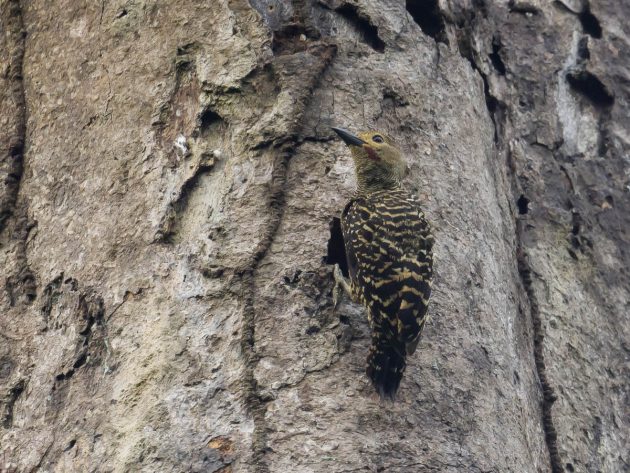
In a review of Gorman’s book on woodpeckers, the reviewer (Koenig) suggests a woodpecker big year, as he reasons that the chance to encounter a wave of Buff-rumped Woodpeckers in his (presumably North American) backyard is very slim …
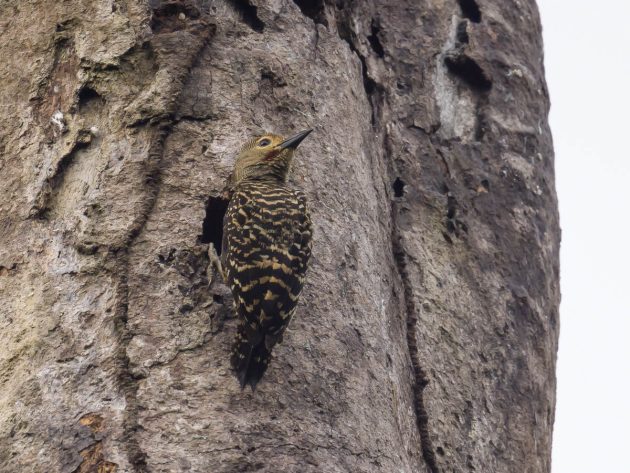
Not only humans suffer from Harry Potter books. Apparently, since the release of the Harry Potter series in Indonesia in the early 2000s the popularity of owls such as the Buffy Fish Owl as pets has increased, leading to more birds being caught in the wild and then sold at local bird markets.
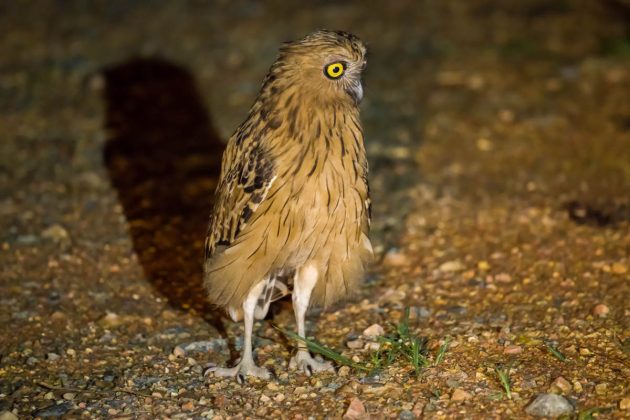
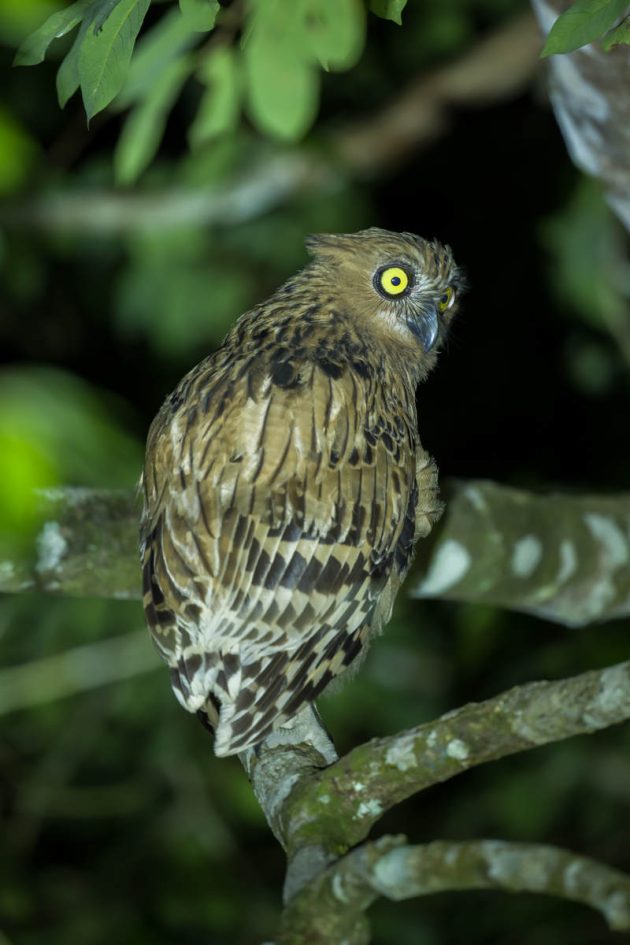
Even the name of the owls has changed: “Whereas in the past owls were collectively known as Burung Hantu (‘Ghost birds’), in the bird markets they are now commonly referred to as Burung Harry Potter (‘Harry Potter birds’)”. (source)
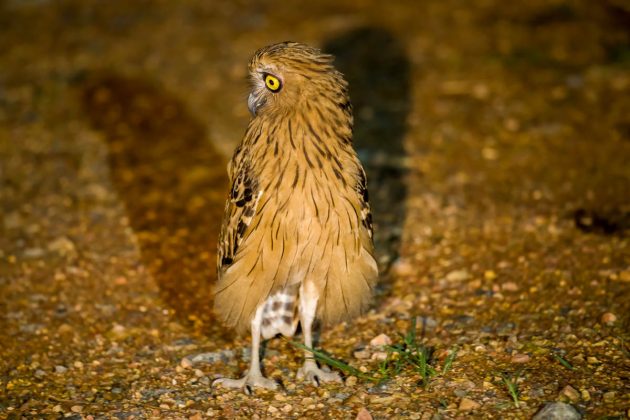
Poor Buffy Fish Owl. It deserves a lot better than being caught and locked in a cage.
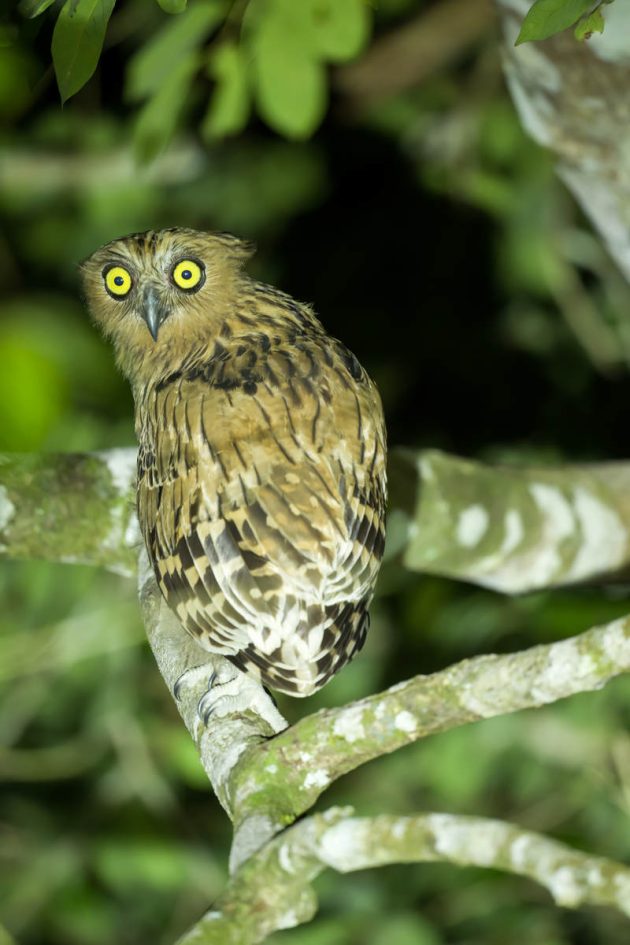
The Brown Boobook looks practically identical to the Northern Boobook passing through Shanghai on migration. Both are part of what one paper calls the Brown Hawk Owl complex – something that is much less objectionable than the military-industrial complex but (at least to me) not really a lot more interesting.
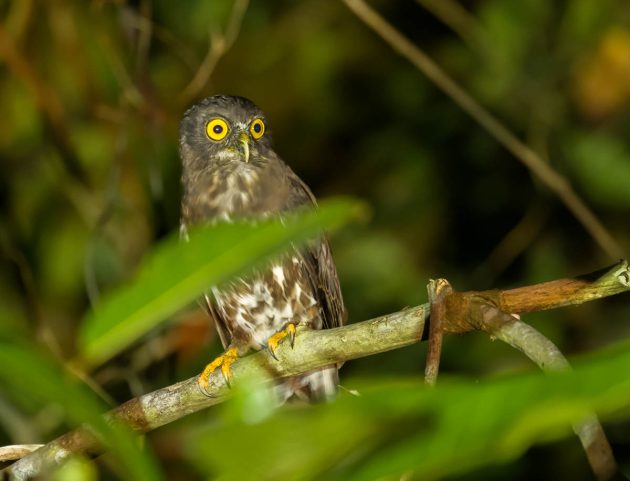
The Brown Boobook is sedentary, though. No chance of seeing it in Shanghai, you have to come further south to see it (as I did on this trip).
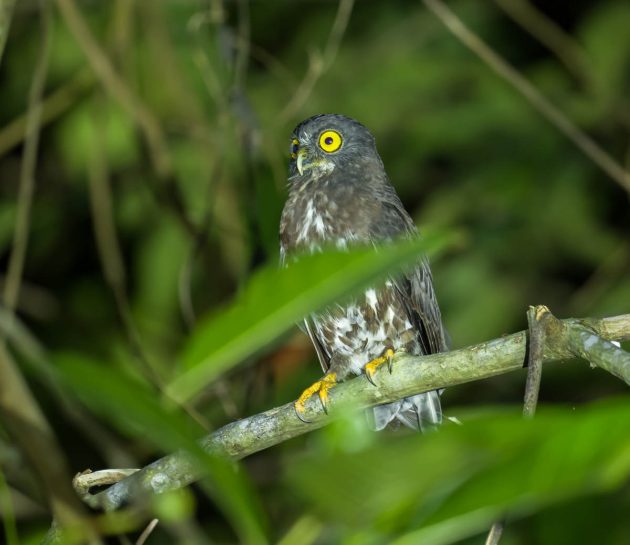
eBird seems slightly spooked by the species, mentioning its “large, unsettling yellow eyes”. Maybe the vague memory of a nightmare? Hopefully, the health plans of Cornell University include access to some psychiatrists …
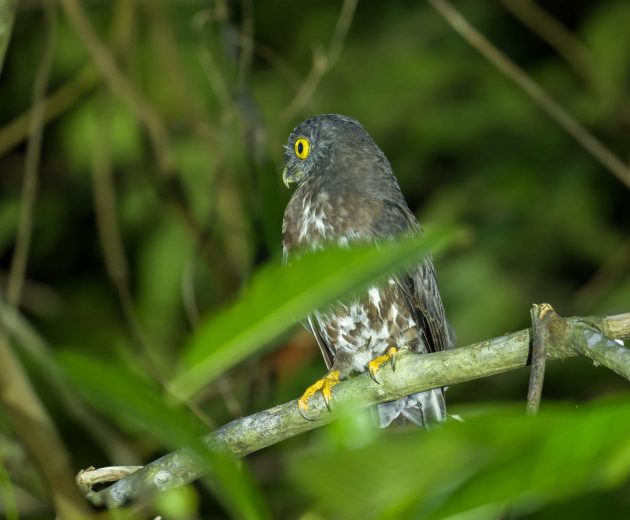
Like owls, the Greater Green Leafbird (if this is indeed one) also suffers from being captured and sold as a cage bird – it is now listed as Endangered.
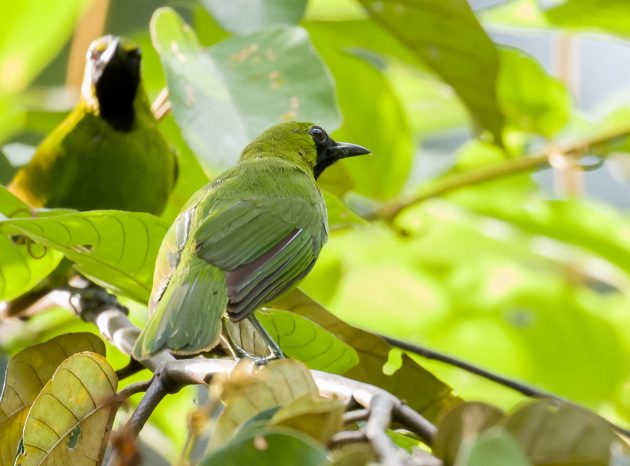
Its species name sonnerati is derived from Pierre Sonnerat (1748-1814), a French naturalist. His somewhat dubious claim to fame includes a book describing his trip to New Guinea despite the fact that he never actually got to the mainland area of New Guinea (source).
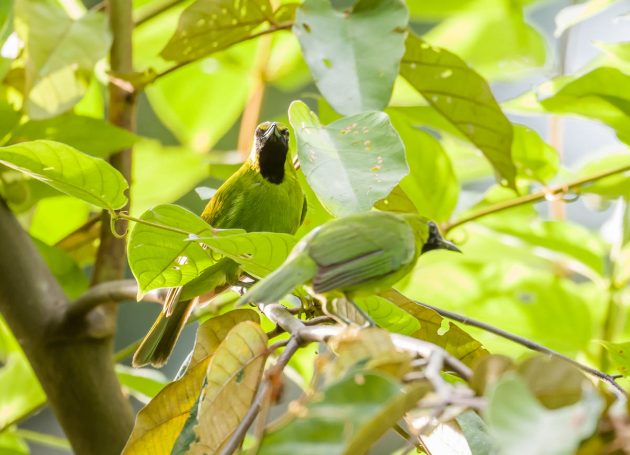
The HBW even has information on the price development of this species: “It is now one of the most numerous species in Indonesian bird markets. Market prices have tracked demand: in 1987 birds retailed for $ 14, rising to $ 44 in 2014 and $ 99 in 2016.”
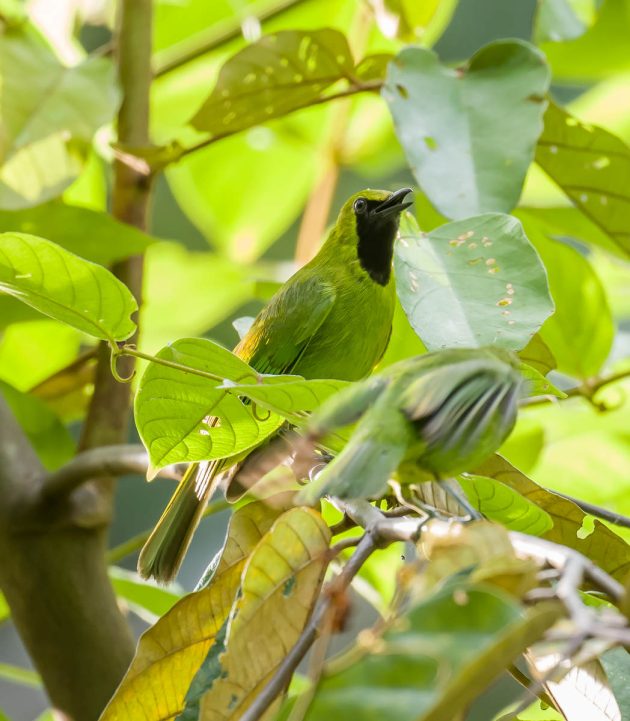
My history of taking photos of the Black-naped Monarch is not a happy one – while I have seen it a few times, even in Shanghai, I never got the kind of photo I really wanted – that of a male with a good view of the black skull cap (or zuchetto – I looked this up) otherwise worn by bishops.
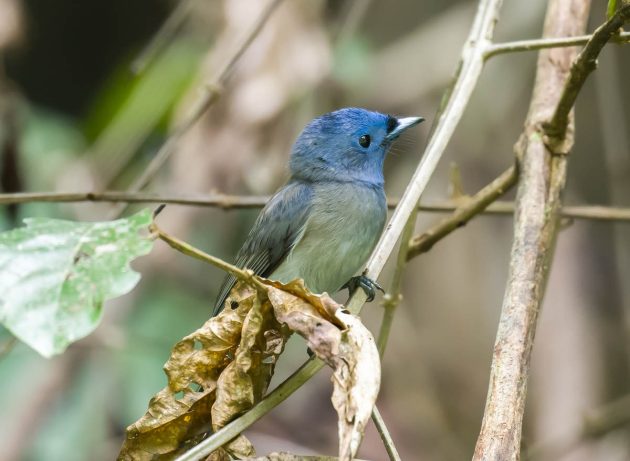
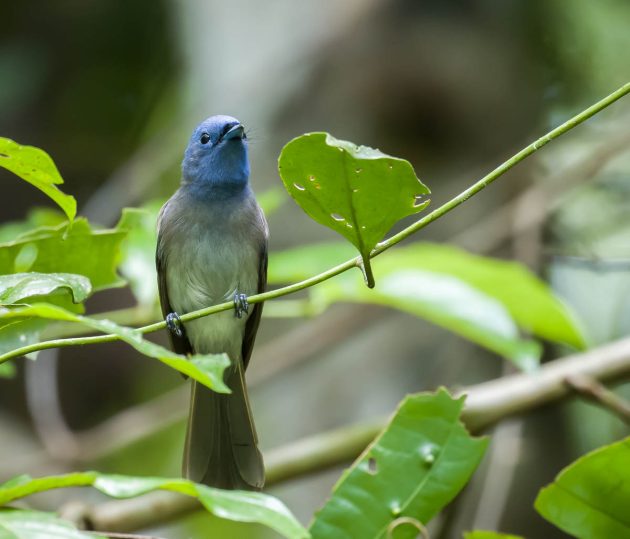
This was another one of these occasions – some decent shots of a female but not of the desired male. Sexism in bird photography is alive and in rude health, I am afraid.
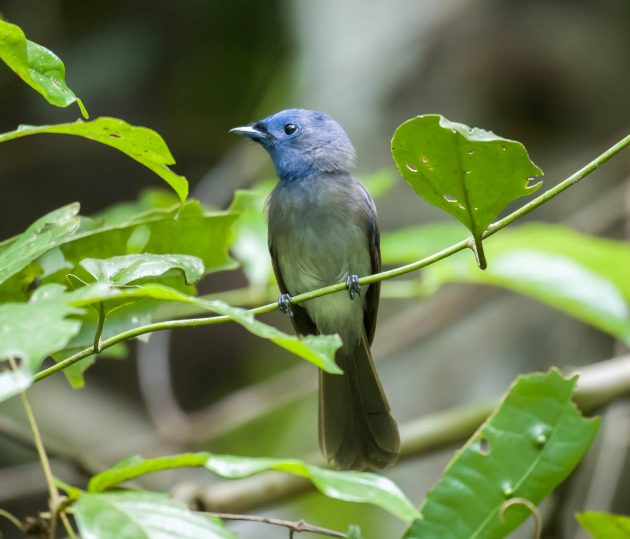
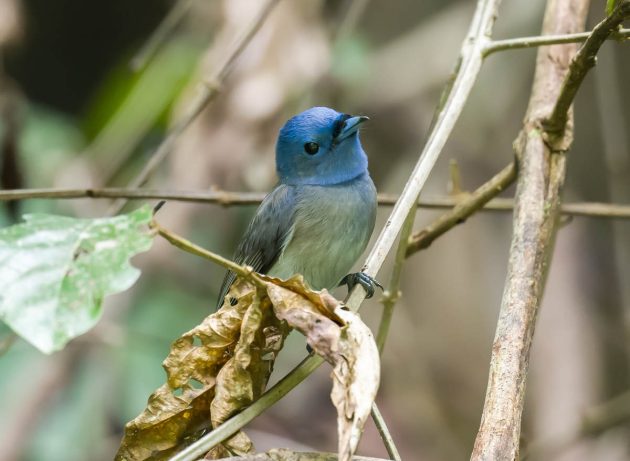
Fortunately for the discerning male birder who does not want to come over as misogynistic, male and female Blue-throated Bee-eaters look alike. So there is no need to specifically look for males.
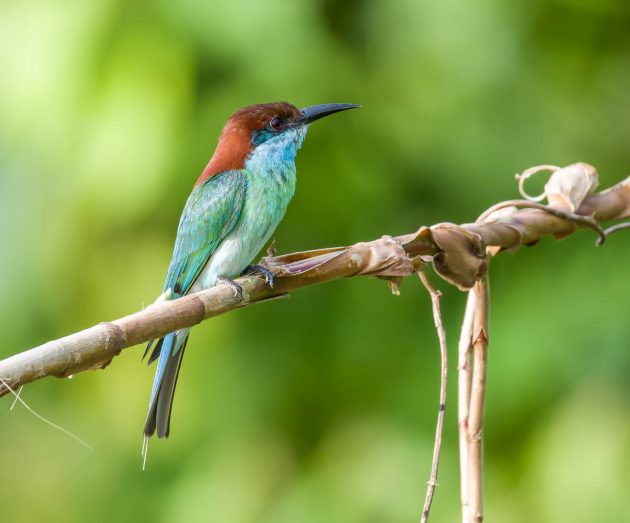
Curiously, the Latin species name viridis (“green”) is much more appropriate for the juvenile bird than for the only partly green adult.
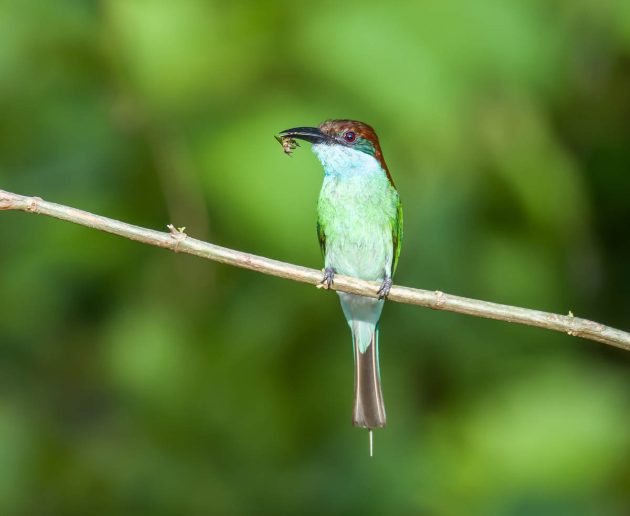
Life as a juvenile Blue-throated Bee-eater is the usual hell that nature provides for many creatures: “Blue-throated bee-eaters practice asynchronous brooding, which means that chicks hatch at different times, often pairing with siblicide. Older chicks are not only larger and able to withstand larger wounds from other siblings, but also have the ability to monopolize the food they are fed by parents.” (source)
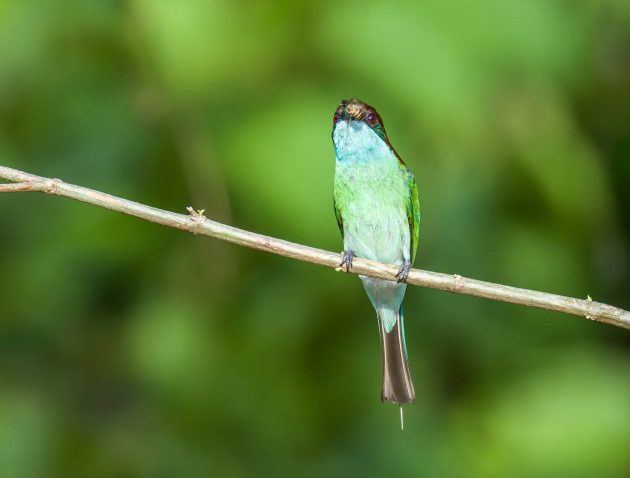
Another paper is even more straightforward: “Sibling competition in blue-throated bee-eaters invariably led to nest fatalities, which were induced by sibling attacks with an apparently unique, but developmentally temporary, hook at the tip of the upper mandible.”
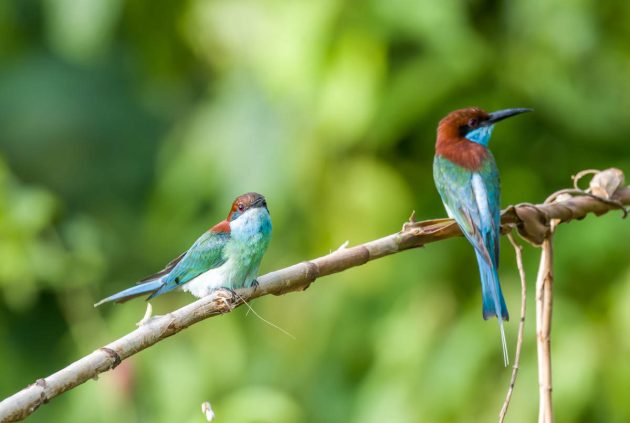
Complete with gory details recorded in scientific detail: “Number of peck wounds and scars on blue-throated bee-eater chicks in relation to the sum of mass differences between each chick and its larger siblings (called the ‘mass disadvantage’) …” Or explain this to the younger one of a pair of siblings: “Mortality often begins with smaller and younger individuals due to the lack of food and attacks from their larger siblings” … (source).
However, despite these known murderous tendencies of Blue-throated Bee-eater chicks [note: Grammarly helpfully suggests replacing Bee-eater with Beef-eater: but no, this is a birding blog, not a cooking show], none of them has ever been accused of murder in a US court, much less convicted. That makes it even less justifiable that some people have to endure lengthy court battles just because they tried to overthrow election results. The only explanation I have for this unequal treatment is that it must be a witch hunt.
If that all sounds a bit too exciting to you, why not look at photos of the Brown Fulvetta? Even the usually fairly positive eBird reviewer admits that “as the name suggests, this is a fairly uninteresting-looking fulvetta without flashy distinguishing characteristics”.
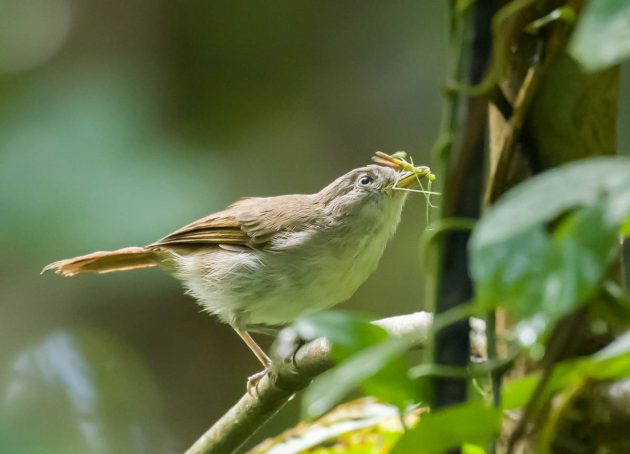
The Brown Fulvetta is listed as “Near Threatened”, which is a bit puzzling given that the HBW names a number of locations where it supposedly is rather common. My personal theory is that listers who see this bird have already forgotten all about it by the time they get around to putting their eBird lists together.
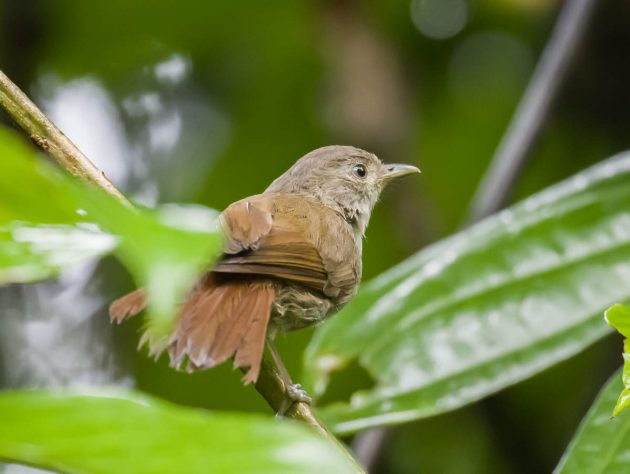
In the “other” section of this post covering those unfortunate animals that are not birds, we have a tarsier.
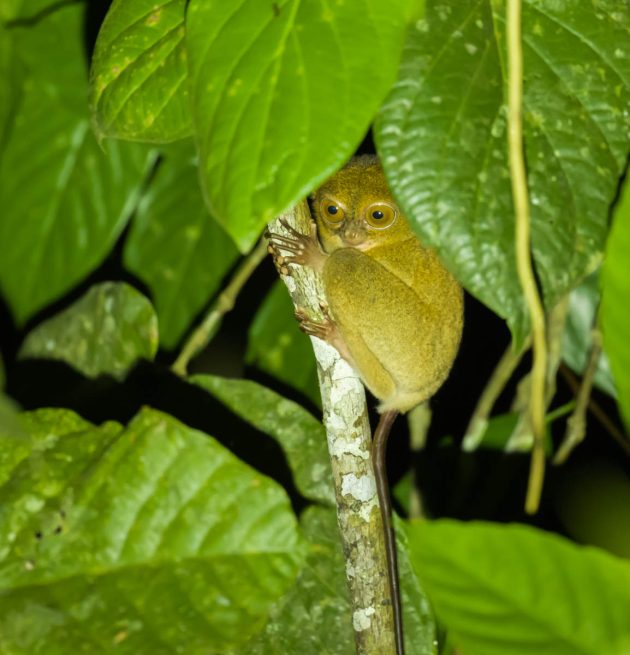
And some other animals.
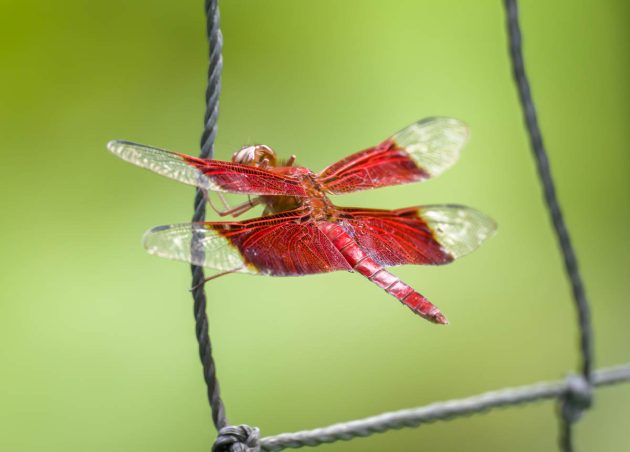
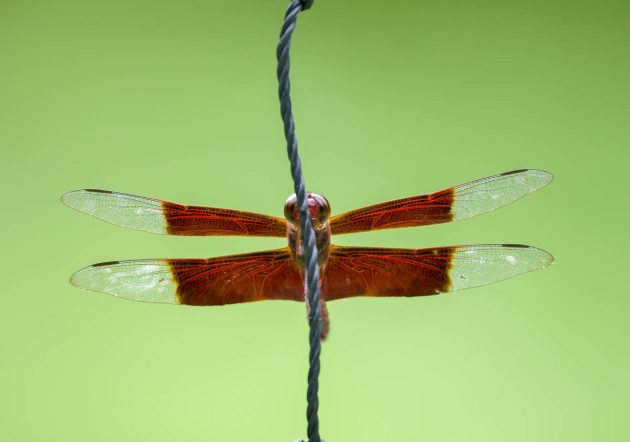
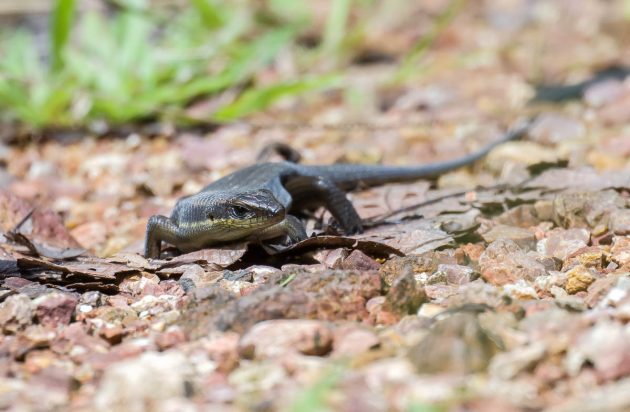













Besides learning about birds in exotic (to me) places, I very much enjoy your sense of humor. No dry recitation of bird species here.
Thanks, Chris! I am rather bored of reading other people’s bird lists myself. Of course, in exchange, you get lots of irrelevant information from me, plus the odd unasked-for advertisement for my favorite bands. Then again, that makes it fun for me to write these posts.
Wow! One of my dreams.